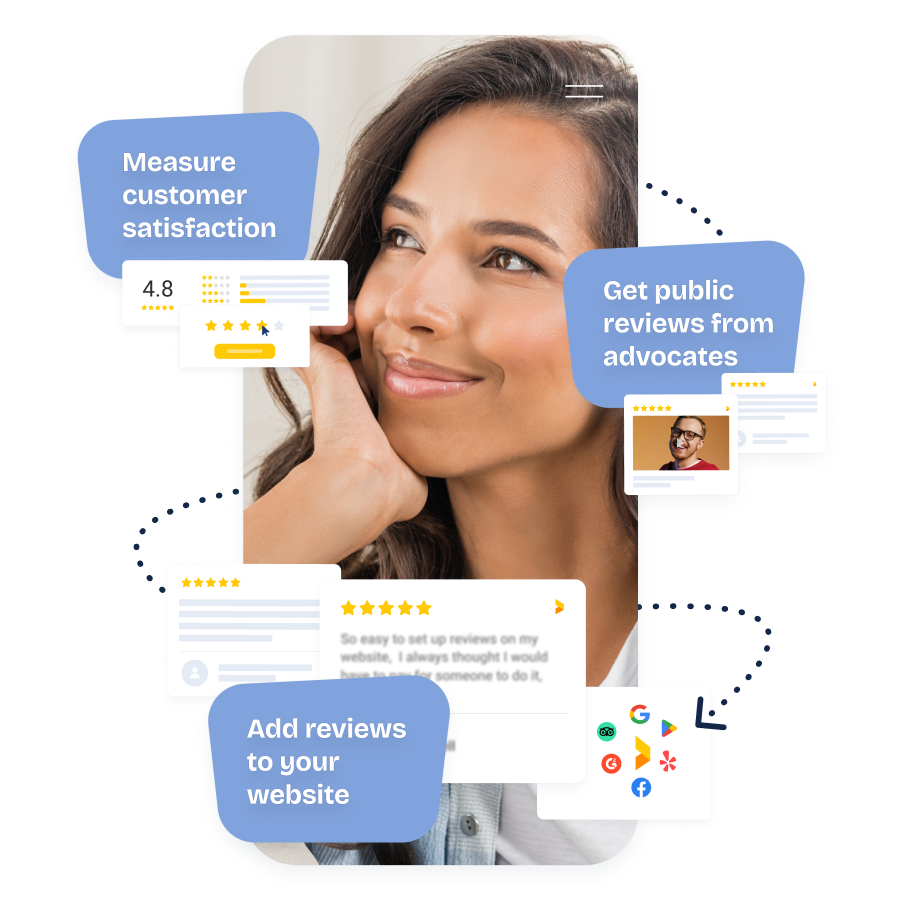Survey Fatigue: Why It Happens and How to Prevent It


Have you noticed that your surveys get fewer responses than before?
Or maybe people start filling out your survey but don't complete it?
It's possible your customers experience survey fatigue.
Survey fatigue is a common issue many companies face when collecting feedback.
In this post, we’ll explore the reasons behind survey fatigue and share tips on how to avoid it.
What is Survey Fatigue?
Survey fatigue happens when people become overwhelmed by the number or length of surveys they’re asked to complete.
I could bet that you have felt it too.
Too many tasks, overflowing inbox, and boom: a request to fill out a survey.
"But they already asked me just a couple of months ago!"
You open the survey anyway and answer a couple of questions. Only to notice that you have completed 20% of the whole thing so far.
The chances are you will ignore or quit the survey altogether, or just run through the answers, clicking on whatever options and skipping the open-ended questions.
Indeed, this respondent fatigue can result in incomplete responses, rushed answers, or people ignoring surveys altogether.
Signs of Survey Fatigue
How can you spot when survey fatigue is happening in your organization?
Here are a few tell-tale signs.
- Lower Response Rates: If you notice fewer people responding, it could be a sign of survey fatigue.
- Incomplete Surveys: More respondents may start but not finish your surveys, negatively impacting survey completion rates.
- Declining Data Quality: Answers may seem rushed or inconsistent if respondents are experiencing fatigue.
- Sudden Changes in Data: If your customer satisfaction surveys have so far produced certain results, a sudden change without a clear explanation might be due to fatigue. Only a certain group of people still have the energy to respond to your surveys (like extremely satisfied and loyal customers, or new customers who haven't yet been in the loop for long).
Survey Fatigue or Something Else?
Of course, survey fatigue is not the only thing that can cause these problems.
Maybe you have a technical problem in your hands: perhaps the survey doesn't work. Maybe there is a glitch in your skip logic that makes people jump to the end prematurely.
Are you reaching all of the people you want? Are your emails going to the trash, or has your QR code stopped working?
Are your questions difficult to understand, resulting in non-response bias?
First test the survey yourself to find these possible issues.
If everything else seems to be in order, it's time to reflect on why survey responses are declining.
Causes of Survey Fatigue
Your next step is to evaluate what might be the reason for respondent fatigue.
Survey Frequency
If you frequently send surveys to your customers or employees, they might start tuning them out. Over time, respondents may feel that their feedback isn’t valued if they see no changes or improvements after completing surveys.
Adjusting the survey frequency based on the type of audience (B2B feedback or B2C, employees) and their interaction with the company can help minimize respondent fatigue.
Low-effort surveys tailored to the engagement level of the audience ensure effective data collection without overwhelming respondents.
Survey Length and Complexity
A long survey can quickly become tedious. Respondents may lose interest or stop midway if they feel like they’re spending too much time on it.
Open-ended questions are especially tricky. Responding to open text fields takes up much more time than just clicking on multiple-choice questions.
Additionally, the amount of thinking required can add to the fatigue. If you ask questions where people need to remember something from a long time ago, expect fewer or poorer answers.
Instead, ask questions that can be quickly responded to.
Poor Survey Design
It might seem trivial, but a poorly designed survey can be visually unattractive, unclear in its purpose, and lacking a structured approach.
This can lead to survey fatigue as respondents struggle to understand or engage with the survey content.
Poor Timing
Sending surveys at inconvenient times, such as during peak work hours or holidays, can lead to fatigue. People are more likely to ignore or rush through surveys when they’re busy.
Repetitive Questions
Asking the same questions repeatedly in different surveys can make respondents feel like their input isn’t being considered or valued.
Worse yet, asking similar questions inside the same survey is pointless and rightfully makes people bored of your survey.

Consequences of Survey Fatigue
You should take survey fatigue seriously.
It can have severe consequences on your business, impacting everything from data quality to customer relationships.
Here are some of the key repercussions:
- Lack of feedback: When survey respondents experience fatigue, they are less likely to participate in future surveys. This decline in survey responses can lead to a significant drop in the amount of survey data you collect, making it harder to draw meaningful insights.
- Biased feedback: Frustrated or disengaged respondents may provide inaccurate or incomplete information. This biased feedback can skew your survey data, leading to misguided business decisions.
- Negative word-of-mouth: If respondents feel overwhelmed by too many surveys, they might share their negative experiences with others. This can damage your brand’s reputation and erode trust and loyalty among your customer base.
- Decreased customer engagement: Over-surveying can make respondents less interested in interacting with your brand. This decreased engagement can affect not only survey participation but also overall customer satisfaction and loyalty.
By understanding these consequences, you can better appreciate the importance of avoiding survey fatigue and take proactive steps to ensure your surveys remain effective and engaging.
How to Combat Survey Fatigue
Finally, what can you do to avoid survey fatigue?
Luckily, you have all the possibilities to turn the situation around.
1. Keep Surveys Short and Relevant
Limit the number of survey questions to what’s truly essential. Aim for surveys that take less than 5 minutes to complete, focusing on key insights.
Most of the time, even just two questions are enough: one to measure and one to describe.
For example, you can first ask an NPS question where people just have to choose the correct score to match their feelings.
In the next question, respondents can elaborate on why they chose the score.
If this set is repeated, you will likely not get open feedback every time, but you will get it when it matters, e.g. when the NPS rating dramatically changes for a specific customer.
2. Space Out Your Feedback Requests
Avoid bombarding respondents with frequent survey requests. Space out surveys, so people don’t feel overwhelmed by too many at once.
While it's good to ask for feedback regularly, you can gradually space out the frequency with long-time customers.
For example, during the first 6 months of a customer relationship, you can ask for feedback each month. After that, just send the request once a quarter or twice a year.
3. Personalize the Experience
Tailor surveys based on the recipient’s interaction with your product or service. This shows you’re considering their unique experience and won’t waste their time with irrelevant questions, improving your survey design.
This can be difficult when you have lots of clients. But using a CRM and creating smart automation flows helps tremendously.
When you make survey requests trigger-based, you can rest assured that customers are sent surveys at the right time.
4. Explain the Purpose
Let respondents know why their feedback matters and how it will be used. If they feel their input is leading to positive changes, they’re more likely to participate in future surveys.
Remember to close the loop by reporting back to customers what you have changed based on their feedback.
5. Use a Variety of Feedback Methods
Mix up your approach. Instead of only relying on long surveys, use shorter polls, in-app feedback forms, or even one-question surveys to keep things fresh.
Also, employ different channels. Use email, social media, website surveys, QR codes, kiosks, paper forms, and anything you can think of!
6. Offer Incentives
Small rewards, like discounts or gift cards, can motivate people to complete surveys, but use them sparingly. Over-relying on incentives can make the feedback less genuine.
Use Trustmary Method to Avoid Fatigue
If you are looking for a tool that minimizes respondent fatigue and maximizes survey results, try Trustmary.
With our unique Trustmary Method, you measure customer satisfaction, collect open feedback, and even get customer reviews with one short survey.

You can automate the whole process with CRM integrations and analyze the data with extensive reporting features.
Additionally, you get to showcase your happy customers' comments on your website – also automatically.
Try Trustmary for free or book a meeting with us to learn more!
FAQ About Survey Fatigue
What is the main cause of survey fatigue?
The main cause of survey fatigue is over-surveying, where respondents are frequently asked to complete online surveys, leading to frustration and disinterest.
How can you reduce survey fatigue?
To reduce survey fatigue, keep surveys short, space them out, and personalize them based on the respondent’s experience. Additionally, employing effective survey research methods can help detect and mitigate symptoms of fatigue.
What is the impact of survey fatigue on data quality?
Survey fatigue can result in lower response rates, incomplete answers, and less thoughtful or accurate feedback, affecting the overall quality of your data. Ensuring the survey topic is relevant and engaging to respondents can help maintain higher quality responses.
How long should a survey be to avoid fatigue?
Surveys should ideally take less than 5 minutes to complete to prevent fatigue. Shorter surveys tend to receive more engagement and higher quality responses. Providing incentives can also encourage respondents to complete longer surveys.
How do you identify survey fatigue?
Signs include lower response rates, incomplete surveys, and a drop in the quality of responses, such as rushed or contradictory answers.